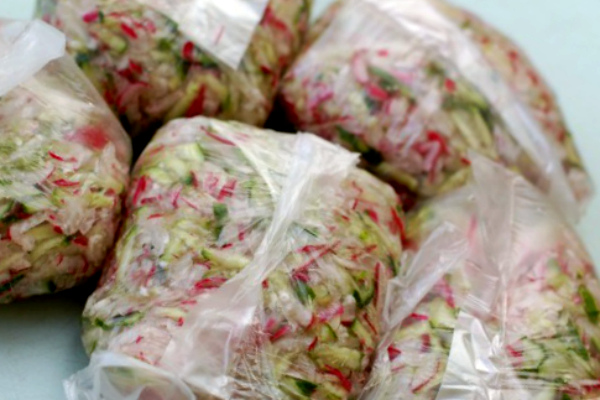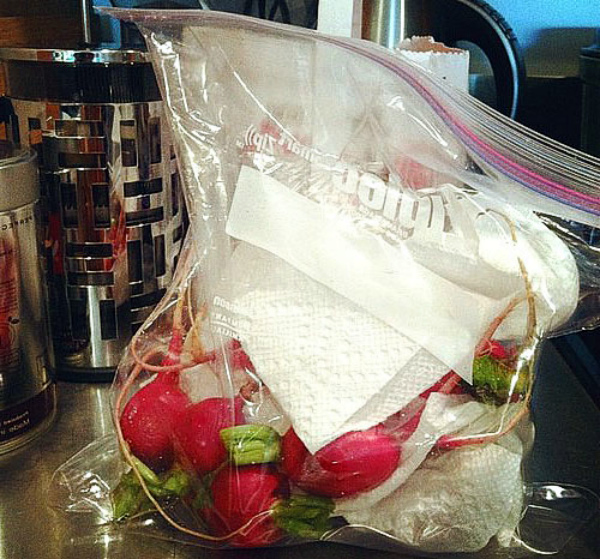How to keep radishes fresh for the winter
Content
Terms of harvesting radish
The harvest of early varieties can be stored for no more than a few days, the roots wither quickly, lose moisture, and with it their taste and useful properties. There can be no question of saving it for the winter. Late ripening varieties are quite another matter. Their turnips are harder, often larger, they can be stored for much longer, it is from them that those that should remain for the winter are selected.
The most common late-ripening varieties are "Red Giant" with its large cylindrical red roots and a little pungent taste, "Ice Icicle", which justifies its name in appearance, "Volcano", whose 200-gram root crops ripen for almost two months, the Chinese "Daikon Prizewinner "with white roots weighing up to 700 g," Dugansky "," Virovsky white ".
In the middle lane, autumn radish is sown from the beginning of August, and late varieties ripen by the middle or even by the end of September. It is this autumn harvest that can be stored for several months, it is left for the winter. Warmer regions grow radishes until October, they are not afraid of light frosts, but the roots should not be allowed to freeze, they are not suitable for long-term storage.
Preparing radishes for storage
It is best to harvest in the morning, while the sun has not yet warmed it up, while it has kept the night cool. Radish harvested during the day is stored much less, it begins to wither immediately after being removed from the ground. The night before, radishes are usually watered, then in the morning it will be at the peak of its juiciness. Turnips are carefully removed from the ground, excluding any mechanical damage. If the extracted plants are left to lie down, the leaves will actively evaporate the liquid, which is why, after cleaning it from the ground (it is carefully shaken off using only a soft cloth), the roots and leaves are cut off the turnips, leaving only 2-3 cm of petioles. For those root crops that are left for the winter, the roots do not need to be cut.
Only whole and unharmed turnips can be stored for a long time, without the slightest signs of rot, frostbite, with intact skin. They are shaken off of soil residues, freed from leaves and dried a little in air or in a ventilated room.
Video "How to keep radishes fresh"
This video will show you how to preserve your garden radish crop so that it stays fresh for a week or two.
Where and how to store
The place and conditions of storage depend on the expected terms. For several days, fresh radishes can be held on the bottom shelf of the refrigerator, they will remain fresh and will not lose their qualities, neither taste nor useful. Usually, for storage in the refrigerator, it is washed, after cutting off the leaves and roots, then dried with a towel, and folded into a plastic bag. Root vegetables will evaporate moisture, if it collects inside the bag, then they will rot. To prevent this from happening, use a bag with holes for air circulation.There is another way: the bag is tightly closed, and paper napkins are put inside. The wipes absorb excess moisture and are changed periodically. The harvest of early varieties is stored in this way for a week, later - two, or even three weeks.
You can store peeled radishes on the bottom shelf of the refrigerator for several weeks using a jar of boiled water. This will exclude drying out and will not make the root vegetables sluggish, but the water (it will have to be changed) will take up a lot of useful substances, and the taste will fade somewhat, it will become less distinct. For better preservation, salt or vinegar is added to the water, but this also affects the taste.
We are used to freezing many vegetables, but this method is hardly suitable for radishes. This is explained by the fact that the moisture inside the turnips freezes rather slowly in our household freezers, it crystallizes and breaks the fibers. After defrosting, such a radish will no longer be crispy and tasty, it will lose not only its appetizing consistency, but also its unique taste. With industrial quick freezing, this does not happen, because air cooled to -40 degrees is used. This method cannot be used to store summer cottage products.
Many summer residents do conservation. This method is very popular in other countries. In Mexico, China, Japan, radishes are pickled and canned with the addition of various spices. Root vegetables are cut into circles, slices, or simply cut on one side to make a half-open bud, placed in a marinade. The simplest marinade consists of water, salt, sugar, and vinegar. Chopped radishes are poured with prepared liquid, the jars are sterilized.
The Japanese turn their giant "Daikon" into dry kiriboshi with a sweet-spicy taste, that is, they cut the vegetable into thin long strips and dry it in the oven. They taught the world how to make radish chips. Chips and kiriboshi are stored for many months in glass jars or double paper bags.
The most familiar way for us, which allows us to store a summer cottage harvest for a long time, is to keep it in a cellar. The same can be done with late varieties of radishes, it can lie all winter, while maintaining appropriate conditions.
The air temperature in the room should be kept within the range from 0 to +3 degrees, and the humidity should be 90–95%. Of course, the basement or cellar must be clean, disinfected, there must be no fungus or rodents.
Root vegetables can be poured in rows into a wooden box, covering each row with sand. The sand should be slightly moist, which means if you take a handful of sand in your hand, squeeze it, and then open your palm, then the sand will retain its shape. Finally, chalk or hydrated lime is sometimes poured over the sand. Some people advise adding chalk, wood ash or hydrated lime to the sand - an alkaline environment will help preserve the harvest. Up to 20 kg of radishes are placed in each box, so it will be perfectly preserved until the middle of winter, or even longer.
Instead of sand, radishes are perfectly stored in sawdust. Phytoncides, which are present in the essential oils of the tree, do not allow rot to grow, and if you maintain the overall humidity of the room, then the roots will not lose moisture.
On the shelves of the cellar, you can scatter radishes, covering it with sand or sawdust from above - this is the same method, only without boxes. As a last resort, the entire crop can be folded into large plastic bags, tightly closed. Of course, the bags will not help preserve the vegetables all winter, but in a couple of months the turnips will not become completely flabby.
There is another method that is rarely used, but it is very effective. You just need to make a clay mash, bring it to the consistency of sour cream, then dip all the root vegetables in it and put it in a box with slots or on a net. The excess clay will drain, and the remaining will dry out, covering each root crop with a dense skin.
For the crop stored in the cellar, you need to carefully monitor, check and remove those turnips that have begun to rot or wither.To maintain moisture, you should keep the water there in an open container or just spill it often on the floor. The harvest of late varieties of radish can be preserved until mid-winter.
Video "Super-recipe for radish salad for the winter"
Want to enjoy your favorite root vegetable in winter? Then use the delicious canned salad recipe from this video.






